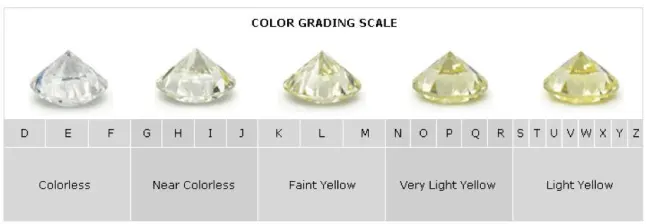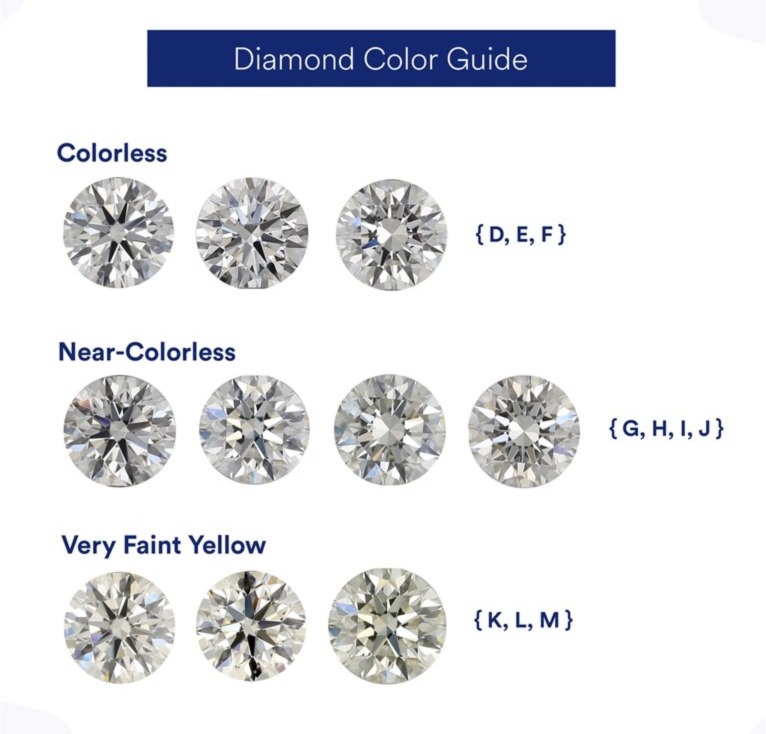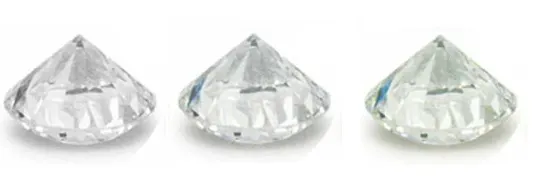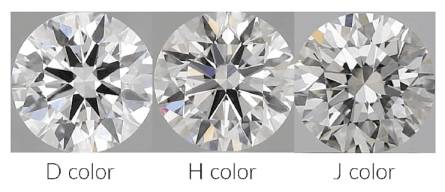Diamond Color Guide: The Ultimate Resource for Understanding Diamond Color Grades
The evaluation of color grade matters in diamond purchases made for engagements rings as well as anniversary presents and financial investments. Through this extensive Diamond Color Guide you will learn how to understand diamond color gradations which range from colorless “D” to faint yellow “Z”. This guide will explain diamond grading methods as well as color influences on beauty and market value together with the most affordable diamond color grade options.

What is Diamond Color?
Diamond color refers to the absence of color in a diamond. Diamond value increases as color decreases. According to the Gemological Institute of America (GIA) color scale standards the diamond color grading system begins with D (colorless) and ends at Z (light yellow or brown).

White diamonds are the primary focus of this guide since personalized notes about fancy color diamonds like vivid pinks, blues and yellows exist in other ranges.
Diamond Color Grading Scale: From D to Z
Here’s a breakdown of the GIA’s diamond color scale:
Grade | Category | Appearance |
D-F | Colorless | Exceptional brilliance; no visible color. |
G-J | Near Colorless | Slight trace of color, difficult to detect. |
K-M | Faint | Noticeable warmth or tint, especially in larger stones. |
N-R | Very Light | Very light yellow or brown visible to the eye. |
S-Z | Light | Light color, usually yellow or brown. |
A diamond’s color grade significantly influences both its aesthetic appeal and market price.
How is Diamond Color Graded?
The Face-Down Technique
Diamonds are graded face down, against a white background and compared to a series of master stones. This minimizes the brilliance and sparkle that could interfere with accurately assessing the color. Each diamond is compared under controlled lighting conditions to determine the precise hue.
Why Face-Down Matters to You
Though gemologists use a bottom-up view to grade diamonds, you will always view your diamond face up, set in a ring or necklace. Interestingly, the visual difference between a D and an H color diamond is negligible when viewed from the top—yet the price difference is substantial.

Best Value for Money: Where to Save and Where to Splurge
Near Colorless Range (G–J)
This is the sweet spot for most buyers. Diamonds in this category are nearly indistinguishable from colorless stones when mounted, especially in white gold or platinum.
- G or H diamonds offer great visual appeal at a lower price than D or E.
- I or J diamonds are ideal in yellow or rose gold settings, as the warm metal blends with the faint tint.
Faint Color Range (K–M)
These diamonds show a visible yellow tint, especially in larger stones or certain shapes. However, they can look stunning when:
- Paired with yellow or rose gold settings, which mask the warmth.
- Used in vintage or antique-style rings where a warm hue is desirable.
- Accompanied by accent diamonds of similar or slightly lower color grades to create contrast.
Tip: Add blue fluorescence to K-M stones—it enhances whiteness and can lower price without sacrificing beauty.
Diamond Shape and Color Perception
Certain cuts reveal color more readily:
- Round Brilliant: Hides color exceptionally well.
- Cushion, Radiant, Oval, Pear: Tend to show more color due to their depth and facet patterns.
- Asscher and Emerald: Step cuts that display color more openly; opt for higher grades here.
Color Comparison: Real-Life Examples
Face-Up Comparison
A D vs H vs J color diamond shows minimal visible difference face-up, especially when cut and set well.

Face-Down Comparison
Color differences are clearer, but this perspective is irrelevant for everyday wear.
Real Ring Setting
An M color stone in yellow gold can appear whiter than an H in white gold, due to the reflective properties of the metal setting.
Diamond Color Buying Tips 🧭
- Buy near colorless (G–H) for best value.
- Maximize sparkle with an excellent cut to distract from color.
- Use metal settings strategically: yellow gold masks tint, white gold emphasizes colorlessne
- Avoid very strong fluorescence in colorless diamonds—can cause hazy appearance.
- Pair side stones wisely: darker side stones make the center stone look whiter.
💡 FAQ: Diamond Color
What is the best diamond color?
D-F (Colorless) is the highest, but G-H (Near Colorless) offers the best value.
Is H color diamond good?
Yes. H color diamonds look virtually colorless when mounted and are significantly more affordable than D or E.
Which color and clarity are best?
Aim for G-H color and VS2-SI1 clarity for a beautiful and budget-friendly choice.
Does fluorescence affect color?
Yes. Medium blue fluorescence can improve appearance in lower color grades, but very strong fluorescence may hurt the appearance of colorless diamonds.
Choosing the right diamond color is about personal preference, budget, and ring design. While the highest-grade diamonds dazzle with pristine brilliance, smart buyers often opt for near-colorless stones and enhance their beauty with clever setting choices.
Whether you’re looking for timeless elegance, modern flair, or a vintage look, understanding the diamond color scale empowers you to make an informed, confident decision.
